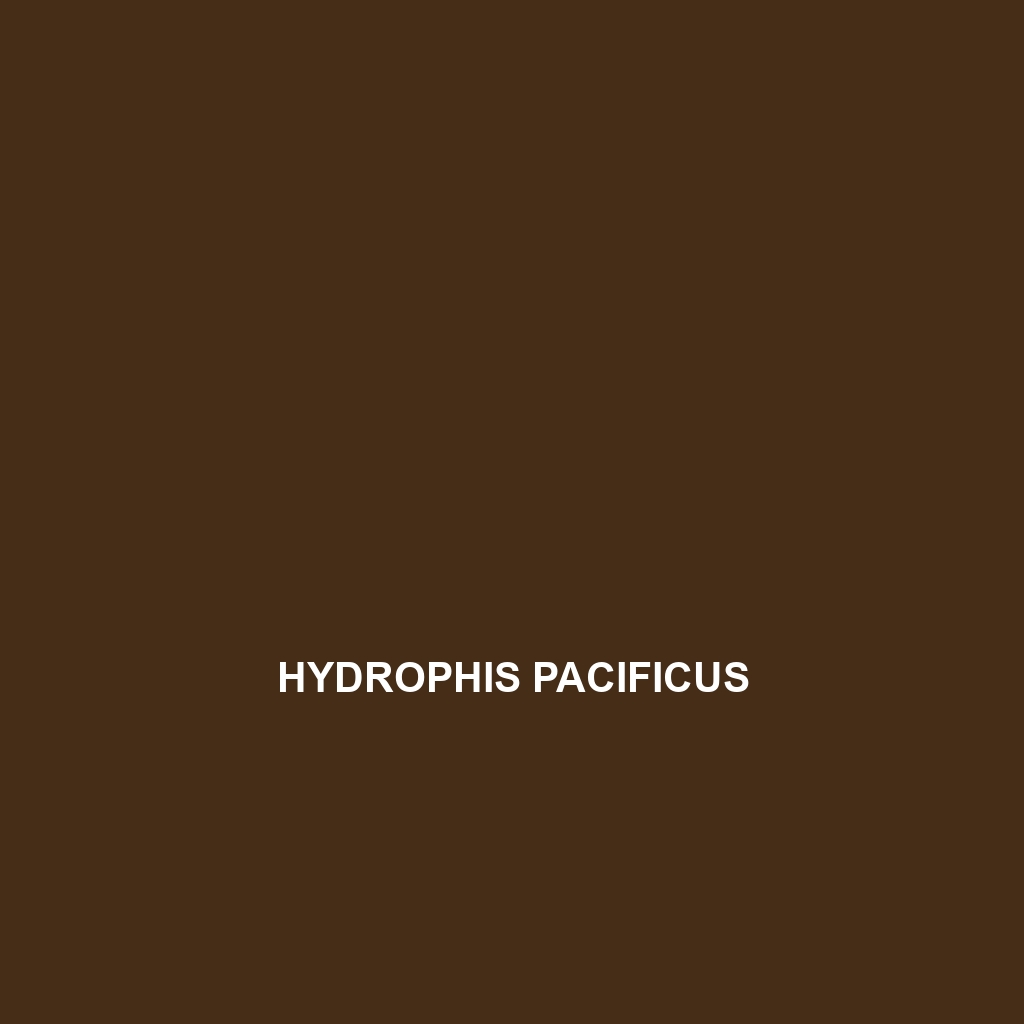Common Name
Hydrophis pacificus
Scientific Name
Hydrophis pacificus
Habitat
Hydrophis pacificus, commonly known as the Pacific sea snake, is primarily found in tropical and subtropical marine habitats throughout the Pacific Ocean. Its distribution extends from the coastal waters of Southeast Asia to the northern shores of Australia, inhabiting areas rich in coral reefs and sandy bottoms. These snakes thrive in shallow waters, often seen in lagoons and estuarine environments, where the salinity is conducive to their survival. The warm climate of these regions, characterized by both coastal rainforests and temperate reef systems, provides a suitable habitat for this aquatic species.
Physical Characteristics
Hydrophis pacificus exhibits remarkable physical adaptations that facilitate its life in aquatic environments. Typically, these snakes can grow to a length of approximately 1.2 meters (4 feet), though some individuals may reach lengths of up to 2 meters (6.5 feet). Their bodies are elongated and laterally compressed, a shape that allows for streamlined movement through water. The coloration of Hydrophis pacificus is predominantly a vibrant olive-green with distinct black bands, which serve as camouflage in their natural environment. Notably, their dorsal scales are more flattened compared to terrestrial snakes, aiding in their ability to swim efficiently. The head is slightly distinct from the neck, with a rounded snout featuring small, sharp teeth adapted for grasping prey.
Behavior
Hydrophis pacificus displays a variety of intriguing behaviors that require further exploration. Often classified as nocturnal, these snakes exhibit increased activity during the nighttime, hunting for food and engaging in social interactions. They have been observed swimming gracefully in the water, using their laterally compressed bodies to navigate with agility. During mating seasons, which typically occur in warmer months, male Pacific sea snakes can often be seen engaging in ritualistic displays to attract females, showcasing their vitality and genetic fitness. These interactions sometimes involve elaborate swimming patterns that emphasize courtship.
Diet
As a carnivore, Hydrophis pacificus primarily feeds on small fish and eels, showcasing a preference for soft-bodied prey. These snakes have adapted feeding habits that include ambush techniques, where they remain motionless to blend with their surroundings and strike when unsuspecting prey swims by. They possess specialized jaws that can accommodate larger prey, allowing them to ingest more substantial meals when available. The diet of Hydrophis pacificus is crucial in controlling fish populations in its ecosystem, highlighting its role as an apex predator in these marine environments.
Reproduction
The reproductive cycle of Hydrophis pacificus is fascinating and is characterized by ovoviviparity, where eggs develop inside the female and she gives birth to live young. Mating typically occurs during late spring to early summer, with gestation lasting approximately 5 to 6 months. Females can give birth to a litter of 3 to 17 offspring, depending on environmental conditions and food availability. The young are miniature versions of adults, fully equipped to fend for themselves shortly after they are born. The mother provides no parental care post-birth, allowing the neonates to quickly adapt to their marine environment.
Conservation Status
Currently, Hydrophis pacificus is classified as a species of Least Concern by the IUCN Red List. Nonetheless, habitat degradation due to coastal development, pollution, and climate change poses significant risks to its populations. Conservation efforts are necessary to monitor the health of their marine ecosystems and to protect their habitats from overfishing and habitat destruction. Collaborative initiatives between governments and conservation organizations aim to raise awareness and promote sustainable practices in coastal regions where these snakes are commonly found.
Interesting Facts
Hydrophis pacificus is often regarded as one of the most venomous sea snakes, possessing a neurotoxic venom that is potent yet rarely dangerous to humans due to their docile nature. Interestingly, they are also known for their ability to hold their breath for extended periods, allowing them to dive deep beneath the ocean’s surface to hunt for prey. Despite their hypothetical danger, these snakes prefer to avoid confrontations and frequently exhibit calm behaviors, often swimming away if threatened.
Role in Ecosystem
Hydrophis pacificus plays a critical role in maintaining the balance of its marine ecosystem. As a top predator, it helps regulate fish populations, which in turn supports the health of coral reef systems and marine biodiversity. Moreover, as they feed on various fish species, they assist in controlling pests that could otherwise overwhelm specific populations. This ecological balance highlights the importance of protecting Hydrophis pacificus and ensuring its habitat remains sustainable for future generations.
